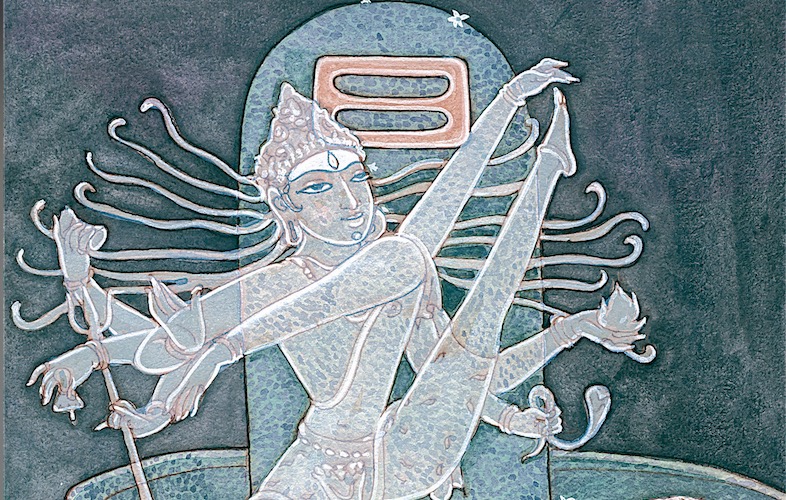FROM THE AGAMAS
LORD SIVA’S BODY COMPOSED OF MANTRAS
_______________
Part two of a discussion about Siva’s body and its cosmic actions
_______________
The following is a translation from the Mrugendra Agama, chapter 3, section 8-15. This chapter ends a two-part series on the nature of the Supreme Lord, Siva, and His body consisting of Sakti’s power. The author reveals why and how Siva is both with body and without. This Agama finishes explaining how Pancha Brahma relates to each part of Siva’s body.
SINCE THERE ARE NO BODY-CREATING SEEDS (Such as anava, karma and others) for the Supreme Lord, His body is not like our own. It is of the nature of Shakti only, constituted of five mantras so as to be instrumentally useful in performing the five cosmic functions. These five constituent mantras correspond to the head and other parts of Siva’s body. The five mantras are: Isana, Tatpurusha, Aghora, Vama and Sadyojata.
Due to the nature of bestowing grace upon all, Siva’s existence and function in the higher plane of pure adhva (pure realm of maya) is comparable to the head-portion of a body. Thus, Isana mantra is considered to constitute the head of Lord Siva.
Tatpurusha mantra is considered to constitute the face of Lord Siva, because His body exists as the activating and energizing source in the bodies of higher souls (devas) and of other beings. It manifests and illumines the knowledge of said beings; it dispels the fear related to the continuing transmigration; and it protects all souls.
The word hridaya is synonymous with consciousness; and Siva’s consciousness is absolute pureness and tranquility. Being free from the state of dreadfulness, aghora, the mantra adopts the form Aghora Hridaya. Since the energy Parigraha Shakti, otherwise known as Adhikara Sakti, is related to impure maya and is considered dreadful, the form of Siva is figuratively said to be frightful.
As the three goals of dharma (righteousness), artha (wealth) and kama (enjoyment) are of inferior nature when compared to moksha (the state of liberation), they are collectively known as vama. That effulgence of Siva which enables souls to experience dharma, artha and kama according to their karmic fruits becomes known as Vamadeva. By its own nature guhya (meaning “not exposed to vision”), it remains very subtle and secret. The Vamadeva mantra is thus considered to constitute the hidden part of Lord Siva’s form, Vamadeva Guhya.
By its mere will, the Sadya mantra creates bodies for souls instantaneously, and it creates the mantric forms suitable for yogic contemplation. Because of this power, and because of its quickness of action (sadya), the mantra assumes the form Sadyojata Murta. Siva is called Murtin—possessor of form—not because He assumes forms, but because of this mantra.
In reality, there is no body for Lord Siva, since all the actions to be carried out by the body are all fulfilled by His Shakti itself. The form as constituted by Shakti is said to be body only in the secondary sense. Even though this power is one only, the enlightened sages maintain that Shakti is associated with different states, such as vama, and others, in view of the varied actions concerned with the pure path, the Shuddha Maya.
S.RAJAM
Siva as the soul and the creator: As the jnani accomplishes his goal in meditation, Siva is seen as form in the formless image. For Lord Siva whose form is constituted in a way with the five mantras, Shakti—who is with invincible power which could never be obstructed—serves as the instrumental force. Through this instrumental force, Siva always performs the five cosmic functions.
DR. S. P. SABHARATHNAM SIVACHARYAR, of the Adi Saiva priest lineage, is an expert in ancient Tamil and Sanskrit, specializing in the Vedas, Agamas and Shilpa Shastras. This excerpt is from his recent translation of the Mrugendra Agama.


